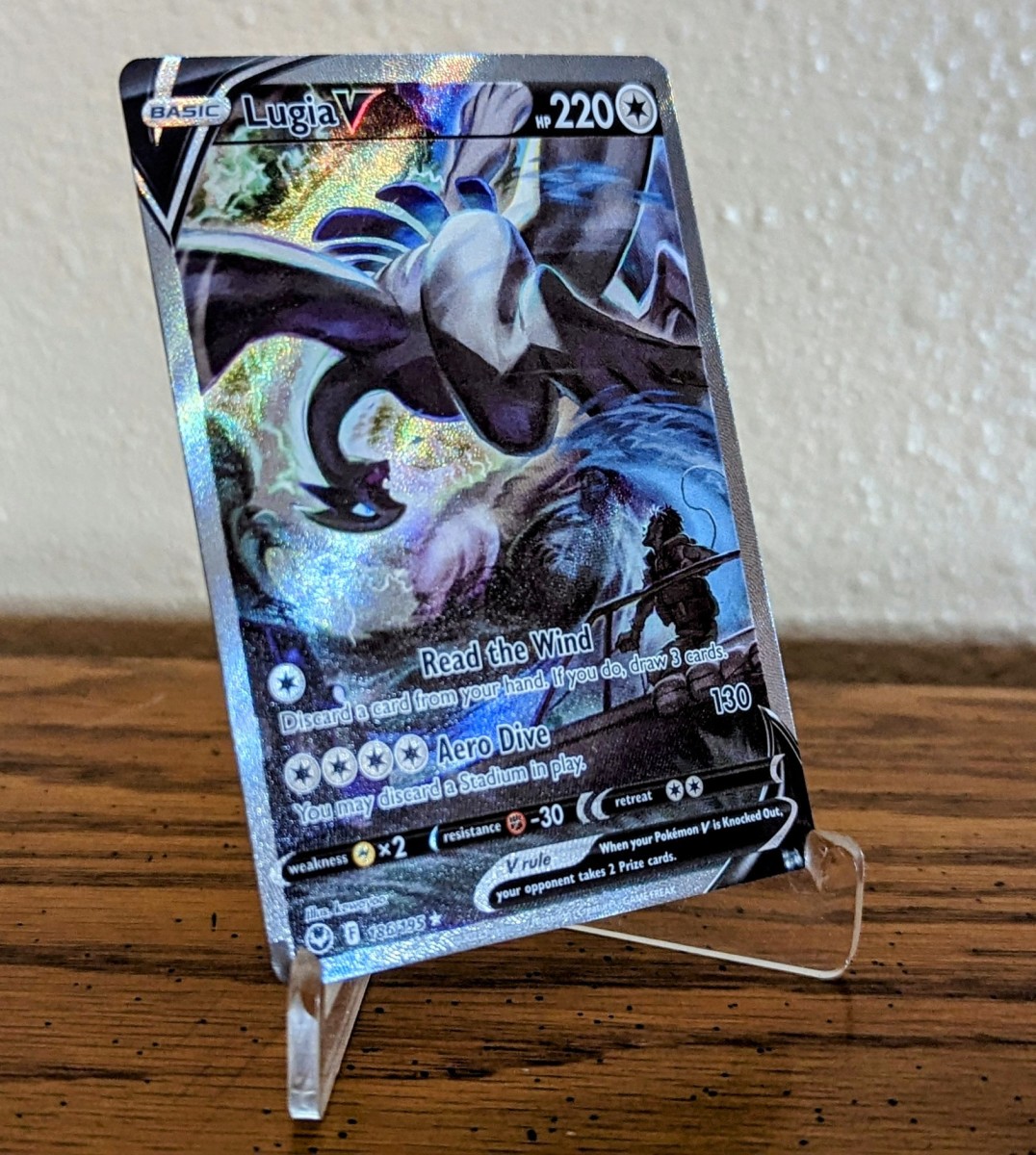Creative that Converts: 10 Best Practices from a Digital Ad Expert
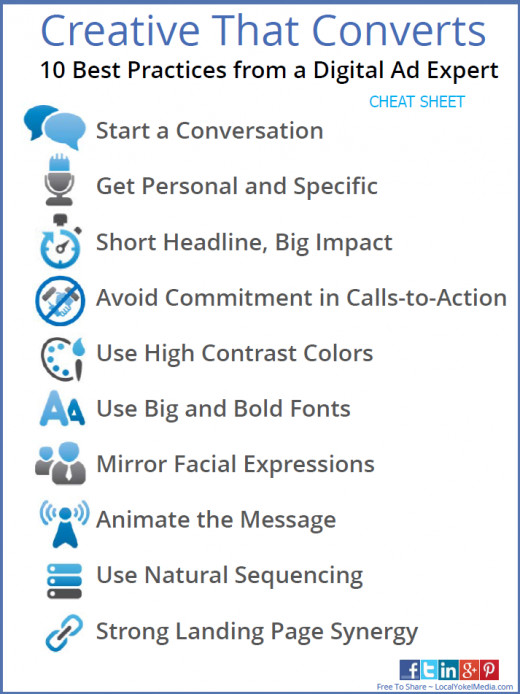
The Top 10 Creative Best Practices
"52% of an ad’s performance is driven by the strength of its creative design."
Whether for a website or a mobile phone, a display ad or a landing page, strong creative design is a critical driver of a campaign’s success. In this article, we will identify 10 specific creative and copy techniques that are easily executed and highly effective across digital media. We will also show 3 case studies of how digital advertising performance was increased as a result of implementing these techniques.
Best Practice #1: Start a Conversation
Your display ad is meant to start a conversation. Asking a friendly question is a natural way to engage someone and encourage a response.

Testing shows that many individuals are more likely to respond to ad copy phrased in the question format (“Want to Escape?”) versus a declarative statement (“It’s time to get away.”)

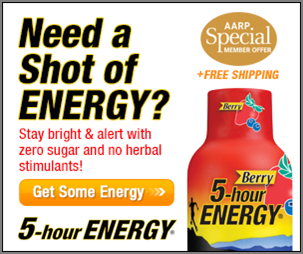

Best Practice #2: Get Personal
Speak directly to a person, as though you’re in a face-to-face conversation.
Alternatively, speak the thoughts of your audience, in the first person.
Use or imply the personal pronoun “you” or “I”.
Make an emotional connection by asking about personal preferences, needs and concerns.
Be specific. Quantify descriptions, attributes and benefits.

Best Practice #3: Short Headlines, Big Impact
Break large amounts of copy into 2 separate components:
a headline, and a subhead.
Use a consistent font, and distinguish between the headline and subhead by using a larger type for the headline and a small type for the subhead.
A short headline will pique interest, and the subhead that follows can further inform and influence.
Alternatively, the 2 components can act independently, with the headline leading to a primary call-to-action and subhead leading to a secondary call-to-action – a technique best suited for tower ad units like the 160x600.
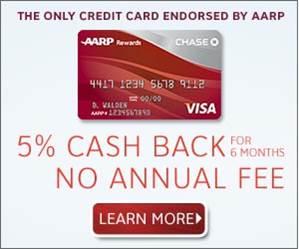


Best Practice #4: Avoid Commitment in Calls-to-Action
The Call-to-Action is a crucial element for any response-oriented creative.
Make it a button.
Incorporate “easy” action verbs such as: find, get, click, see, etc.
Do not use verbs that imply involvement or commitment, like
“register”
“complete,” or
“purchase”
They discourage response at this initial stage of your conversation.
More involved requests should occur later in the conversation – on your landing page.
Optimal positioning of the Call-to-Action is immediately following the main message that ignites the audience’s interest.


Best Practice #5: Use High Contrast Colors
Use strong color contrast to make key elements of the ad stand out for easy absorption.
Most important is a contrast between the copy and the background color.
White is a very effective background color.
In addition to white, keep the background un-textured and un-segmented, for a clean and clear presentation of all important elements – copy, Call-To-Action, image and logo.

Best Practice #6: Use Big and Bold Fonts
Keep fonts simple and fairly large in size, to ensure ease of readability.
Use of large fonts means that copy needs to be brief, which will also improve digestion of the message and response.
Sans-serif fonts like Tahoma, Trebuchet, Arial, Myriad, Helvetica and others are always excellent choices.

Best Practice #7: Mirror Facial Expressions

Images of human faces ensure visual appeal and immediately attracts attention, drawing the audience into your message.
Use images of happy, smiling individuals and couples in the targeted age range, making direct eye contact and closely-cropped to focus on the face. This reinforces the relevancy of your offer to the audience and boosts performance.

Best Practice #8: Animate the Message

A viewer will decide whether or not to click on an ad within 3 seconds. Use brief animation to attract attention. Animation should be used to focus attention on the copy and the call-to-action. It should not take several seconds to lead up to the final offer. Animate the copy, which is the point and purpose of the creative. When animating graphic elements, use them to reveal the copy – giving both the graphics and the copy equal attention. Keep a “persistent” call-to-action accessible at all times, on all frames.
Best Practice #9: Apply Natural Sequencing
The sequence of elements should guide your audience through the ad, helping them visually process the message.
In horizontal units, a left-to-right flow is most effective.

In vertical units, a top-to-bottom flow is most effective, with key elements concentrated in the upper, most immediately visible portion of the unit.
Best Practice #10: Strong Landing Page Synergy
After clicking on a display ad, an individual invests only seconds in deciding whether or not to interact with the page.
The landing page should immediately fulfill the promise of the display ad.
Improve follow-through by giving ad creative and pages a similar look and feel.
Keep colors, fonts and imagery consistent.
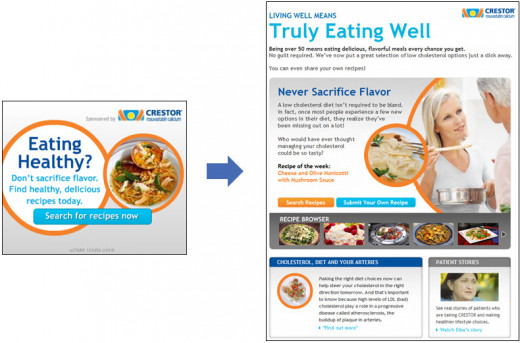
Section 2: Case Studies
"A few simple tweaks can significantly improve ad performance.”
The following are some before-and-after examples of how 3 simple tweaks to the creative, applying the best practices outlined in this report, significantly boosted performance for Tangible Impact clients including AARP, Norton and Stouffer’s.
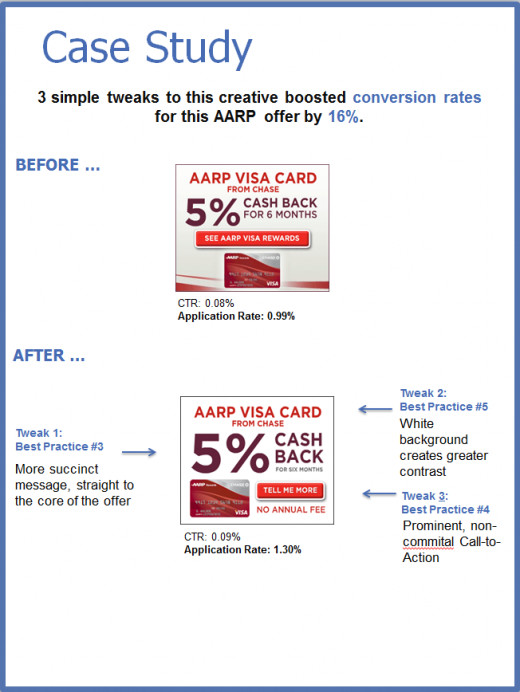
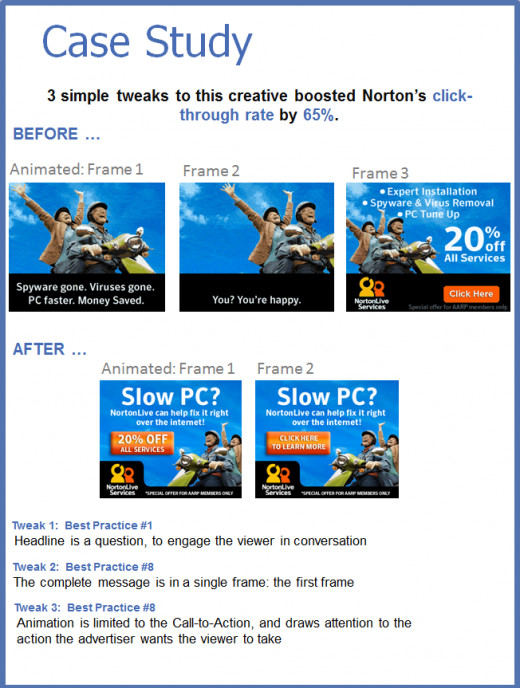
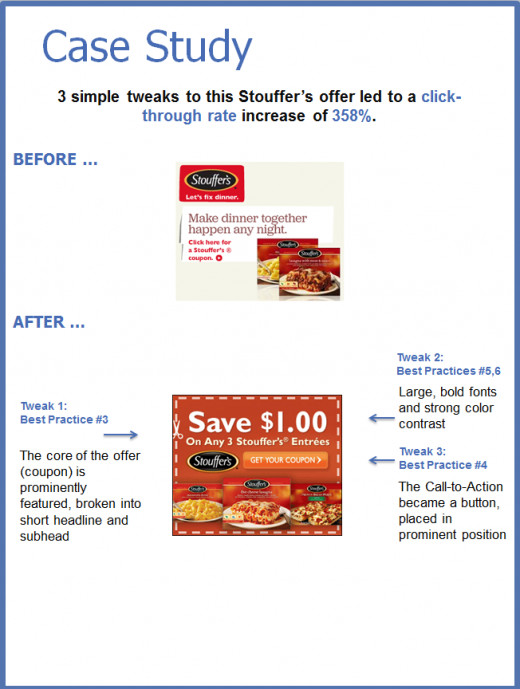
Your Turn: Ready to Ramp Up Your Creative?
Armed with these 10 digital creative best practices, you can now tweak your existing display ad creative to boost its performance, or begin planning your new campaign with confidence.
As you prepare to take your new-and-improved creative for a test drive, keep in mind that creative only influences 52% of the ad’s potential to drive performance: placement of that creative in the correct context, and showing that creative to the most appropriate audience, are 2 additional critical drivers.
If you are a business with local targeting interests, Local Yokel Media can help you reach hyperlocal audiences within tightly-targeted service areas across the country, through trusted local content. We call this geo-contextual relevance, and it is another key factor in driving superior ad performance.

About the Author: Beth Sibbring
The author of this report, Beth Sibbring, is an expert in performance based digital ad creative. Beth’s firm, Tangible Impact powers Local Yokel Media’s ad creative strategy and solutions.
An interactive marketing pioneer, Beth launched CompuServe’s first banking, brokerage, travel reservation and other original ecommerce services in the 80’s and 90’s.
Beth went on to originate AOL’s performance management team in 2000, with the mission to contribute to campaign performance through creative testing and optimization.
Beth is a founding partner of Tangible Impact, Local Yokel Media’s creative agency partner, specializing in design, testing and campaign management services for interactive marketers across all channels.




